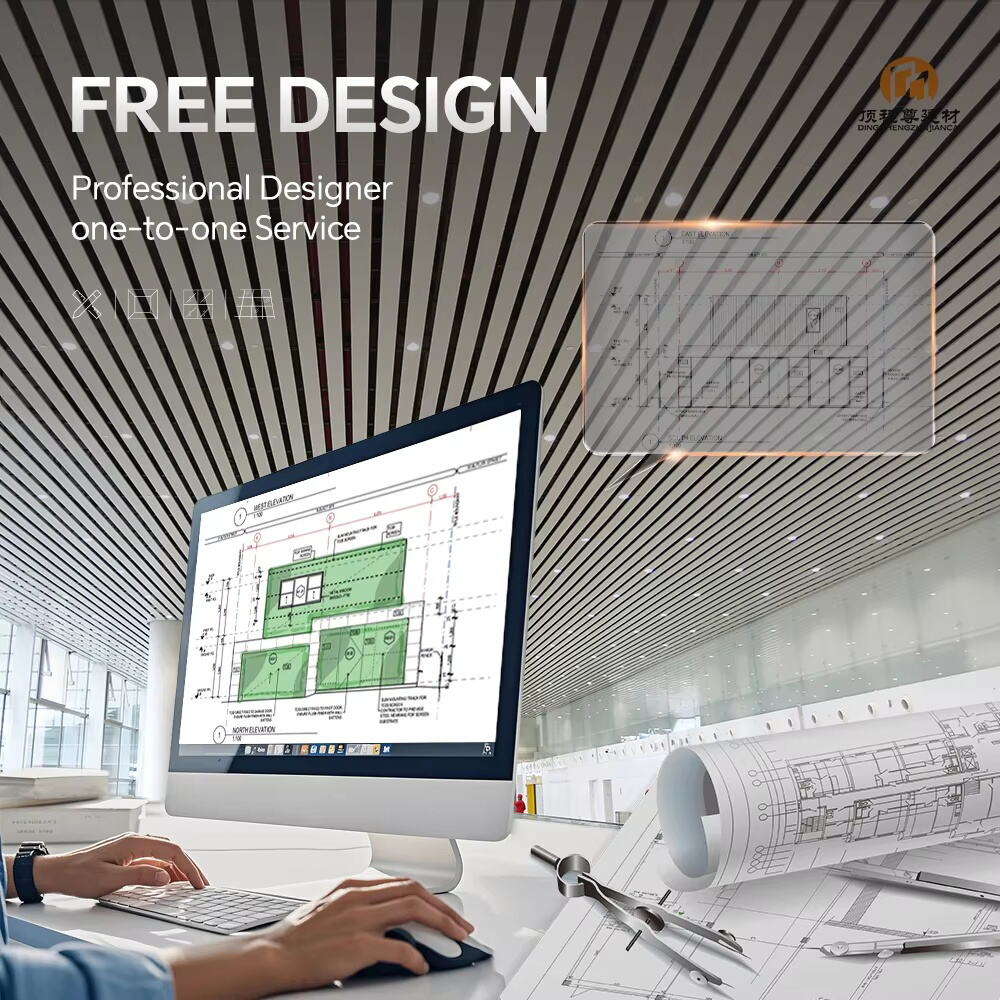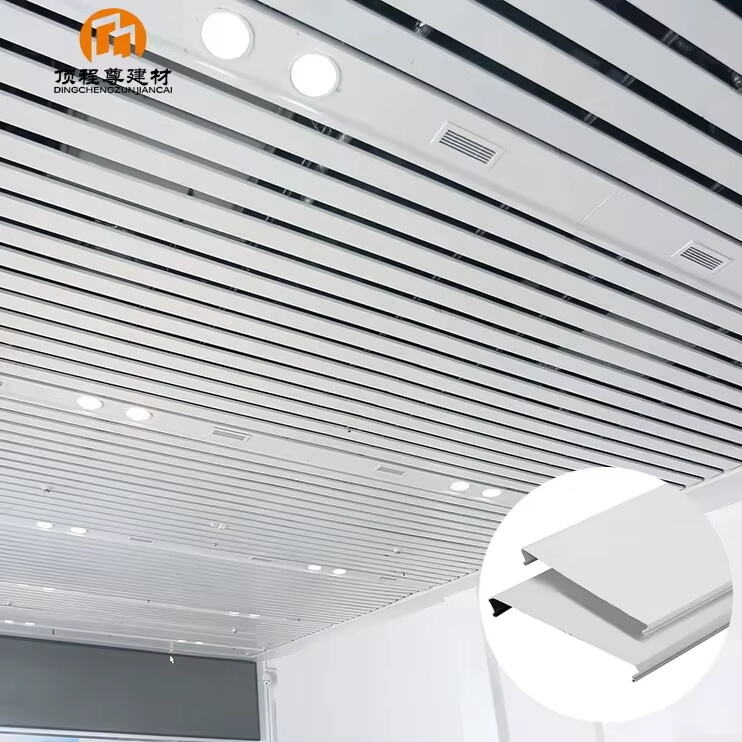Understanding the Role of Strip Ceilings in Commercial Spaces
Balancing Aesthetics and Functionality
Strip ceilings fit right into today's commercial designs, giving offices and retail spaces that clean, modern look businesses want these days. They work well in pretty much any setting while still looking classy without drawing too much attention to themselves. What really sets them apart though are all the different ways they can be installed. This means better visibility across rooms and smarter lighting arrangements that actually work for daily operations. Beyond just looking good, these ceilings create environments where people feel comfortable working and moving around. Some companies report happier staff when the workspace feels more professional overall. Plus, clients tend to notice the quality finish and take away a positive impression about the business itself.
Impact on Space Perception and Productivity
Strip ceilings work wonders when it comes to changing how we see space. They create this optical trick where rooms look taller and more spacious than they actually are, which makes a big difference in how people feel in their workspace. When employees aren't cramped, they tend to be more comfortable and get things done faster. Research indicates that good ceiling design generally helps reduce distractions and keeps workers focused on tasks at hand. Getting the ceiling height right matters too because it affects both sound quality and light distribution throughout the room. These factors combined can really impact productivity levels, sometimes even boosting output around 20%. For businesses looking to create efficient workplaces that support staff well-being, installing strip ceilings might just be worth considering as part of their overall office design strategy.
Assessing Lighting Needs for Optimal Illumination
Task Lighting vs. Ambient Lighting Solutions
Getting clear on the difference between task and ambient lighting makes all the difference when it comes to good lighting in commercial settings. Task lighting basically shines light right where people need it most, like desks or countertops, so folks can see what they're doing whether they're reading documents or typing away at computers. Ambient lighting works differently though. It's more about filling up a room with enough light so everyone feels comfortable and can move around without bumping into things. When companies mix these two approaches together, their workplaces tend to feel better overall. People aren't straining their eyes anymore, and different areas actually serve their purposes properly instead of just being randomly lit up.
LED Integration Strategies
LED lighting has become a go to choice for many because it saves energy and lasts much longer than old fashioned bulbs, especially when installed in those strip ceiling setups. The numbers are pretty impressive too most places see around a 50-60% drop in their electricity bills after switching over. Energy groups have been pushing this change for years now. Getting the most out of LEDs takes some thought though. Good design means mixing different kinds of lights where needed and adding dimmers so people can adjust brightness levels as they please. Take dimmable LED bulbs for example these little wonders actually create that warm glow similar to regular light bulbs but without all the wasted energy and heat buildup that used to be such a problem with traditional lighting options.

Material Selection for Strip Ceilings
Aluminum: Durability and Modern Appeal
Aluminum strip ceilings are becoming popular in commercial buildings with heavy foot traffic because they last longer and look great without much maintenance. These ceilings can withstand daily wear and tear better than many alternatives, which makes them perfect for places like shopping centers or office complexes where people constantly move around. What's interesting about aluminum is that it can be recycled multiple times without losing quality, something architects care about when trying to meet green building standards these days. Manufacturers now offer all sorts of finish options too ranging from brushed metal looks to matte white surfaces, giving designers plenty of creative freedom. This variety means businesses don't have to sacrifice style for practicality since the materials hold up over time while still looking good in almost any interior setting.
PVC: Lightweight and Moisture-Resistant Options
The lightweight build of PVC strip ceilings gives them real structural benefits, which makes installation straightforward in commercial settings. They work particularly well in kitchens and bathrooms where dampness is a constant problem. These ceilings stand up pretty well against humidity and water damage too, so they make sense for areas that get wet regularly. Research shows that using materials like PVC which resist moisture actually extends how long these spaces last and keeps them functional. Plus, PVC strips come in all sorts of bright colors and different finishes, giving architects and designers lots of room to play when creating attractive interiors.
Gypsum: Versatility in Design
Gypsum strip ceilings really shine because they're so versatile when it comes to design. Architects and interior designers love working with them since they can shape and adjust these ceilings to fit whatever look or function a particular project needs. The material itself is pretty fire resistant too, which means commercial buildings get that extra bit of protection against potential hazards. What's interesting is how gypsum allows for intricate designs and eye-catching patterns that actually make rooms look more interesting rather than just functional. Studies indicate gypsum does a great job absorbing sound as well. This makes it especially good for offices or retail spaces where keeping noise down matters a lot. When workplaces aren't constantly filled with background chatter and echoes, people tend to focus better and generally feel more comfortable while getting things done.
Design and Layout Considerations
Linear Patterns for Visual Continuity
Strip ceilings with linear patterns offer an excellent way to create continuity across different areas of a building. The straight lines help direct attention around the space, making people feel more connected to their surroundings while moving through rooms. When designers use these continuous lines throughout a space, they actually tie together various elements of interior design, which makes sense for companies wanting consistent branding throughout their premises. Beyond just looking good, this kind of layout works well in stores, offices, and restaurants where maintaining a particular vibe matters. Businesses find that customers pick up on these subtle design cues, so investing in cohesive ceiling patterns pays off when trying to establish a strong brand presence without being too obvious about it.
Curved and Geometric Configurations
Adding curves or geometric patterns to strip ceilings brings something fresh to today's interior spaces. When we talk about curved designs, they really bring out creativity that fits right in with what people consider stylish these days. Geometric shapes work differently though they tend to give rooms a cleaner look, almost like putting order where there was none before. These kinds of ceiling designs don't just sit there looking pretty either. They actually become eye catchers for certain parts of a building, helping highlight important sections within commercial areas. Businesses have lots of choices when it comes to designing these spaces, which means they can craft environments that truly reflect who they are and what they do without feeling forced or artificial.
Aligning with Brand Identity
Strip ceiling designs really need to match what a brand stands for. For instance, tech companies often go for sleek, contemporary looks while places like law offices tend toward classic styles. Putting company logos or color schemes into the ceiling itself takes branding beyond walls and furniture. When ceiling choices line up with the core values of a business, it makes the whole space feel more intentional. Visitors pick up on these subtle cues without even realizing it, which helps them form stronger associations with the brand over time. A well thought out ceiling design isn't just decoration it becomes part of how people remember and talk about the place.
Energy Efficiency and Smart Controls
Reducing Operational Costs with LED Systems
Moving away from old fashioned lighting to LED setups in those strip ceiling installations represents a smart step towards cutting down on energy usage. The truth is these LED systems really do cut back on power consumption and maintenance expenses over time. Many commercial operations report getting their money back on LED upgrades within three to five years depending on how much they actually use the space. Industry data shows businesses switching to efficient lighting solutions typically see reductions in their electricity costs ranging from around 25 percent all the way up to half what they used to spend. Beyond just saving cash though, this kind of upgrade makes good environmental sense too. Companies looking ahead know that investing now in better lighting isn't just about immediate savings but building something that will continue paying dividends for years into the future while supporting greener operations.
Automated Lighting Management
Adding smart controls to lighting systems really boosts energy efficiency because it automatically turns lights on and off depending on who's around and how spaces get used throughout the day. Companies that install this tech typically see energy bills drop anywhere from 30% to 50%, which means big savings over time. What people might not realize is that these systems also create better working conditions. Lights adjust themselves to match natural daylight levels during morning hours and then dim appropriately in the evening, helping employees stay focused without straining their eyes. When architects incorporate smart controls into modern strip ceiling designs, it shows they care about both cutting-edge technology and reducing environmental impact. Offices with these systems just feel smarter somehow, almost like the building itself knows what needs to happen next.
Acoustic Benefits of Strip Ceilings
Noise Reduction in High-Traffic Areas
Acoustic strip ceilings are really important for cutting down on noise problems in commercial buildings where there's a lot going on. These ceilings work by soaking up excess sound waves instead of letting them bounce around everywhere. The result? People can actually hear each other better when talking, plus the whole space feels less stressful to be in. We've seen research from several architectural firms indicating that choosing the right kind of ceiling material makes all the difference. Spaces with good acoustic treatment become much better places for meetings, concentration, and general day to day operations without constant background noise干扰.
Material Choices for Sound Absorption
How well strip ceilings absorb sound really depends on what kind of materials go into them, especially those special acoustic tiles. When businesses choose these right materials, they see a noticeable difference in how their spaces handle noise, which makes a big impact on employee satisfaction at work. Looking at how different materials perform acoustically allows companies to pick options that actually work better for their needs rather than just going with what looks good. Good material selection does double duty too it makes the place look nicer while cutting down unwanted noise levels significantly. Most office managers will tell you that this combination of looks and function creates a much better working environment overall.
FAQ
What are strip ceilings?
Strip ceilings are a type of ceiling design often used in commercial spaces to provide a modern, sleek look. They are known for their ability to enhance aesthetics and functionality in various environments.
How do strip ceilings impact productivity?
Strip ceilings can enhance the perception of space and improve acoustic comfort and lighting, contributing to improved productivity by reducing distractions and increasing focus.
What materials are used for strip ceilings?
Common materials for strip ceilings include aluminum, PVC, and gypsum, each offering distinct advantages such as durability, moisture resistance, and design versatility.
How do LED systems benefit strip ceilings?
LED systems offer energy efficiency and cost savings when integrated into strip ceilings, reducing lighting expenses and contributing to sustainable business practices.
What acoustic benefits do strip ceilings provide?
Strip ceilings can reduce noise pollution in commercial spaces, enhancing speech intelligibility and overall comfort by absorbing unwanted sounds.


